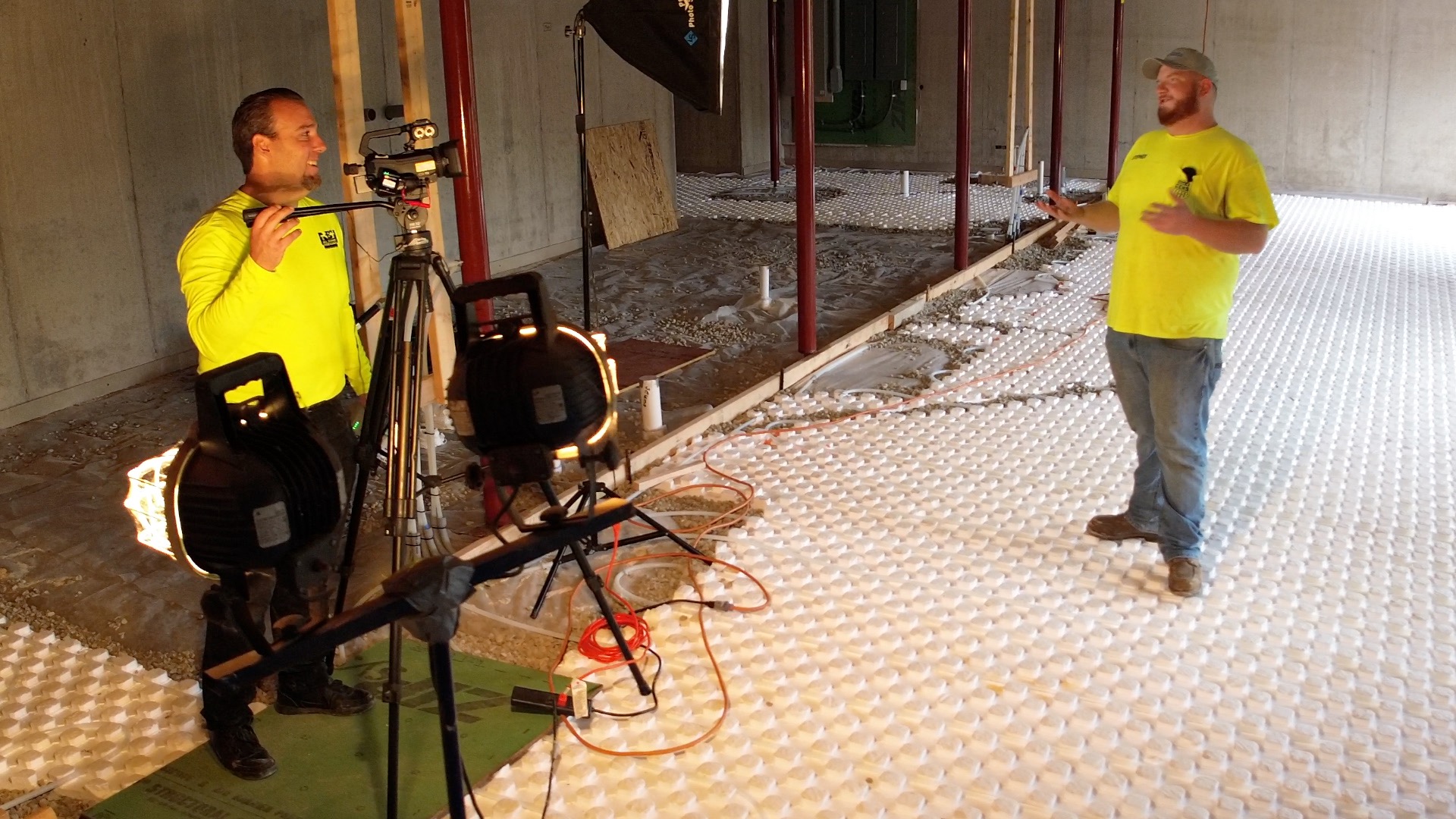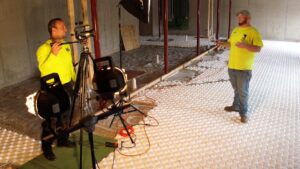
10 Tips for Interviewing People Who Aren’t Used to Being on Camera
Interviewing someone who doesn’t usually appear in video or television can be a challenge—but it’s also an opportunity to capture authentic, heartfelt stories. The key is to make your interviewee feel at ease while guiding them toward clear, usable soundbites. Below are ten practical tips—drawn from real-world transcripts—that can help any producer or videographer.

Local video producer Matt DeSarle interviews Stephen Senkovich of CEMS.
Tips for Moderating Video Interviews
1. Start with the easiest question: “What is your name?”
It might sound simple, but it sets the right tone. Everyone learned how to answer that question in preschool. Leading with “easy” lowers anxiety, makes the subject feel successful immediately, and reminds them you’re working with them, not against them.
2. Cover housekeeping right away.
Ask for the spelling of their name, formal title, and role. This ensures accuracy in graphics, captions, and credits while also warming them up with a straightforward task.
3. Coach them to “paint the picture.”
Encourage subjects to acknowledge what’s happening in the background—whether it’s nail guns, passing cars, or birds chirping. Ask them to describe the sights and sounds and even motion with their hands. This not only relaxes them but also creates richer, more engaging footage.
4. Simplify technical jargon.
Many interviewees are experts in their field, which means they default to complex explanations. As video producers, our job is to keep the content conversational, fresh, and relevant to the audience. By asking to translate technical jargon into lay-person speak, you are making it more conversational.
So if someone says, “the ridge vent has a perforated plastic cap,” you might coach them to say, “those final shingles keep water out.” The shorter version is not only easier for an audience to understand, it’s also more natural for the speaker to deliver.
5. Ask about impact, not just process.
Many first-time interviewees default to describing the process of what happened: “they worked on the ridge vent,” “they finished in three days,” etc. The problem is that those statements often slip into past tense and feel technical. As an interviewer, guide them toward the present-tense, active voice—what’s happening right now and what it means.
For example, instead of “they finished the shingles yesterday,” you might prompt: “so today, the roof is sealed and the residents are safe and dry.” The shift to present tense makes the soundbite more engaging, and the focus on impact gives it lasting relevance. These statements resonate because they move beyond tasks and into outcomes that span years—or even generations. A roof completed today protects families for decades, which is the kind of future-oriented impact that sticks with an audience.
6. Anchor answers in proper nouns.
When sponsors or partners are involved, remind the interviewee to mention them by name instead of saying “they” or “them.” For example, have them say, “Marcon Roofing has been a great partner,” rather than “they’ve been great.” Anchoring answers in proper nouns creates clarity for the audience and ensures editors have clean, usable soundbites when cutting the video.
7. Invite comparisons.
An effective way to help someone articulate value is to ask them to compare. “How does Marcon Roofing stack up against other companies you’ve worked with?” prompts natural contrast and highlights strengths without forcing a canned testimonial. Comparisons also help the subject show confidence in their answer, since they’re drawing from lived experience.
8. Redirect when details aren’t clear.
Sometimes interviewees struggle with timelines or numbers. Instead of letting them stall, offer an alternative angle. And here’s an important distinction: referring to what year a business or partnership began buys more shelf-life for the video as compared to listing how many years. For example, the answer on “how many years” will always change, but the birth date of this project will always be 2015.
This way, the interview holds up over time without becoming outdated in just a year or two.
9. Keep consent and usage on record.
At the end, always ask for verbal confirmation that the footage can be used for marketing or public purposes. This protects everyone legally while also giving closure to the interview. It’s a small but crucial step that ensures transparency and trust.
10. End with an invitation to add more.
After you’ve run through your questions, ask: “Is there anything I didn’t ask that you’d like to add?” This gives the subject ownership of their story and often produces the most authentic, heartfelt soundbite of the day. Those unscripted, add-on moments frequently become the highlight of a video.




